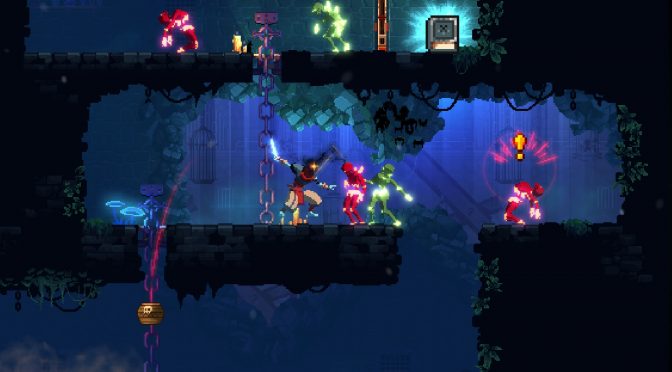Motion Twin have released a new dev diary elaborating on the benefits of using procedural generation in their stylish upcoming roguevania game titled Dead Cells. By mixing procedural generation with metroidvania game design, Motion Twin wants to provide players with replayability and discoverability, but also maintain a sense of gated progression.
However, instead of backtracking through environments, Motion Twin will let death and rebirth be the mechanic for forward progression in Dead Cells.
Here are three benefits to using procedural generation in a metroidvania style of game:
- Procedural generation can provide you with more content than what we could ever do if we tried designing everything by hand.
- It allows the developer to shift where the difficulty lies in the game. Instead of asking the player to memorize the level and enemy positions in order to make it through, the developer can reward reflexes and instinctive play, which is something they’ve found to be much more interesting overall.
- It brings a lot of replay value and diversity to each run, which is fairly important when talking about a game with permadeath as a central mechanic.
Steve Filby, marketing manager at Motion Twin, said:
“Unfortunately, relying too much on procedural generation leads to bland level design, often feeling messy and rather inconsistent. A good example of the middle ground between pure procedural generation and fully handmade is Spelunky. Their approach allowed them to get that consistent feeling while keeping a lot of diversity. We’ve basically adopted the same approach for Dead Cells.”
Dead Cells will be released this Spring!

John is the founder and Editor in Chief at DSOGaming. He is a PC gaming fan and highly supports the modding and indie communities. Before creating DSOGaming, John worked on numerous gaming websites. While he is a die-hard PC gamer, his gaming roots can be found on consoles. John loved – and still does – the 16-bit consoles, and considers SNES to be one of the best consoles. Still, the PC platform won him over consoles. That was mainly due to 3DFX and its iconic dedicated 3D accelerator graphics card, Voodoo 2. John has also written a higher degree thesis on the “The Evolution of PC graphics cards.”
Contact: Email



